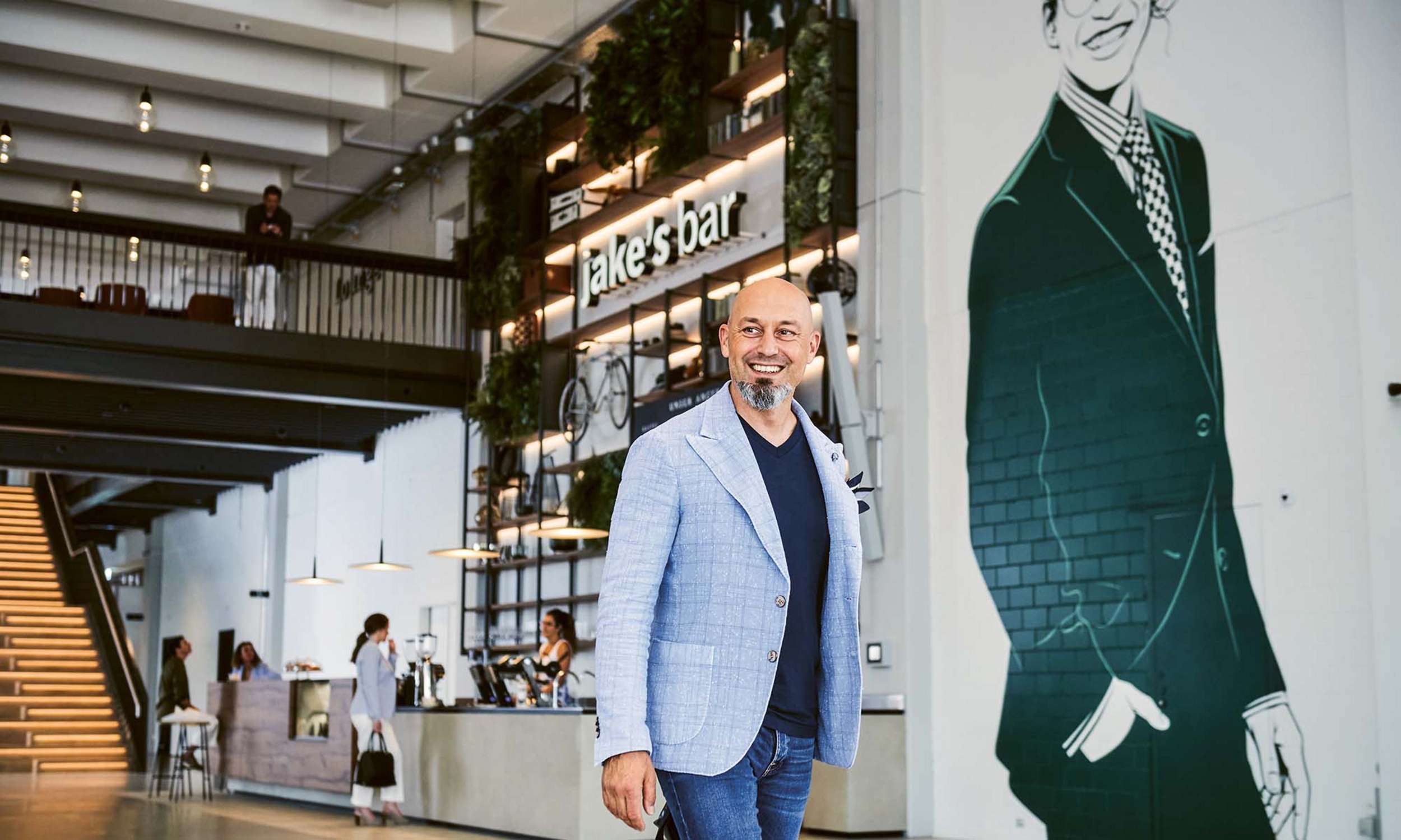Story
«Mit zufriedenen Kunden erreichen wir unsere Ziele.»
Why did Swiss Prime Site purchase this site?
Gianfranco Basso: The former newspaper printing site of the Neue Zürcher Zeitung offers great opportunities for property developers. High ceilings, a long and meaningful history and potential for identification with the space make existing industrial buildings and offices ideal for major projects. These were probably the decisive arguments in favour of purchase back in 2015 – and they still apply today.
Strictly speaking, the location of the site is not exactly «prime». Would you agree?
GB: Schlieren overall, and that area in particular, is very popular with a range of industries. On top of that, the product that we are now developing is extremely attractive and unique in this form. So very much prime!
What makes this kind of property special?
GB: It’s the interaction of various factors. On the one hand there’s the architecture, with its bricks, concrete, steel and plenty of light, which creates possibilities for unique meeting spaces and ensures exceptionally good visual communication. On the other hand, you’ve also got the industrial charm, the large spaces, high ceilings and load capacities, which allow for unusual uses of the space as well. The question of sustainability also plays an important role. Instead of tearing down the existing buildings and replacing them with a new build, we have preserved, renovated and converted the structure. This saved considerable resources.
«It’s the openness of the site, the mixture of internationalism and urban character, and the positive blend of history and modernity we’ve been able to generate.»
What were Swiss Prime Site’s initial plans for the site?
GB: Even back then, the vision was to create an «innovation location» on the site. We soon started discussions with our first anchor tenant, Zühlke. The consultancy firm was based on the other side of the railway tracks and was looking for a new location.
Let’s go back a step for a moment. How do you approach a project like this?
GB: We went through a classic product development process. Part of that was a strong focus on what we call the «customer journey» and asked ourselves first and foremost who needs spaces like these and what kinds of things should happen on the site. Over the years a real biotech locale has developed in Schlieren, right next to our site. This was also something that appealed to our first anchor tenant, Zühlke.

How significant is the risk that you take on as the developer of a project like this?
GB: It is possible to mitigate risks to a certain extent. You need knowledge, market expertise and a degree of flexibility. These ensure that you don’t leave demand out of the project equation. We develop and create living spaces for people. Communicating with possible future tenants is essential for that.
Why didn’t you simply put up an office tower?
GB: If we’d been developing the project for a large individual tenant, that might have been an option. But an office tower wouldn’t have done justice to this unique site. Our target tenants for the area are looking for surroundings that reflect who they are and inspires them. The question of location and infrastructure is hugely important in attracting the right employees.
That brings us back to the idea of the «prime product».
GB: Exactly. And this product is made up of all kinds of values and qualities. The modern spaces, the generous and attractive indoor and outdoor meeting zones, the tenant mix and in particular the diversity on the site are all important if you want to achieve impressive results with this kind of project.
Specifically, what are the success factors for the JED project?
GB: It’s the openness of the site, the mixture of internationalism and urban character, and the positive blend of history and modernity we’ve been able to generate. When you carry out projects like this, there’s a certain phase that signals to the property developer that they’re on the right track.
What phase is that?
GB: I call it the «tenant gets tenant» phase.

And what happens there exactly?
GB: Well, a project like JED generally starts with an idea and the first major tenant. In our case that was Zühlke. If the product is right and the anchor tenant is satisfied, they bring this satisfaction into the market via their network. This results in a kind of dynamism, which helps to generate the tenant mix that you want. After Zühlke came Halter. This allowed us to attract an events and catering provider. This mix was then enough to persuade local SMEs like Caffetino and Boulder Lounge. A perfect example of «community building».
Were there any restrictions or obstructions from the authorities, that is, from the town of Schlieren?
GB: The town was very pleased that we were seeking dialogue with them. A project like JED is excellent for promoting the area. The location of the former printing works used to be hermetically sealed. Through our project, we’ve opened up the premises, made the site accessible, created attractive public spaces and significantly raised the quality of the location.
Looking to the future, what is still to come at JED?
GB: We still have our new building project on the land reserve that we want to use. At the same time, we plan to strengthen the innovation, knowledge transfer and entrepreneurship cluster further.
